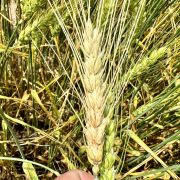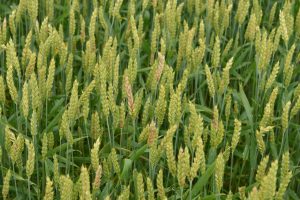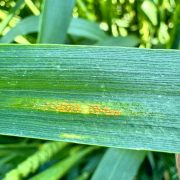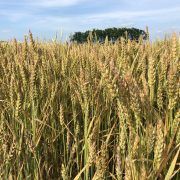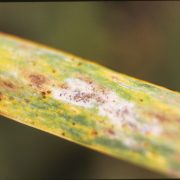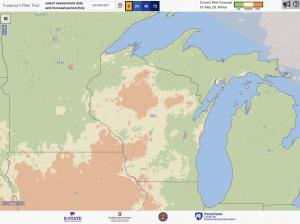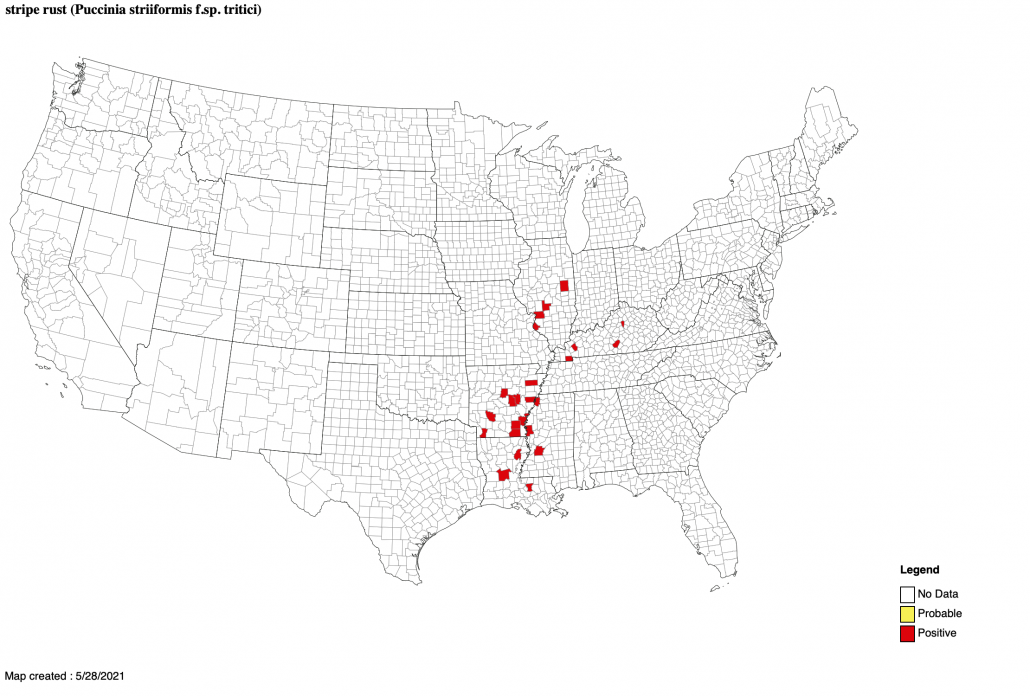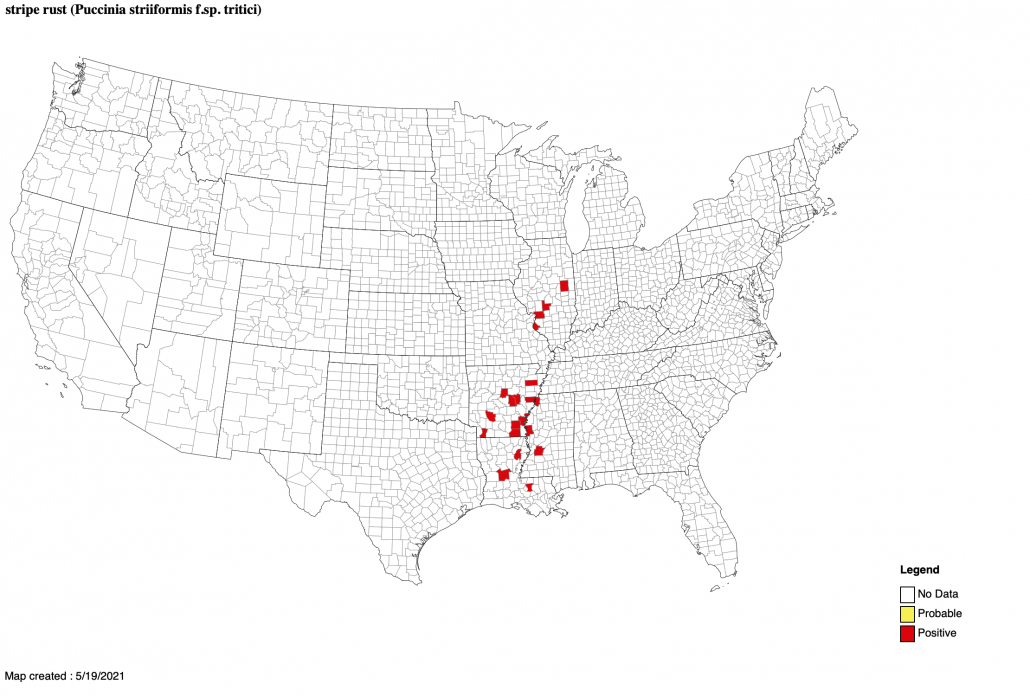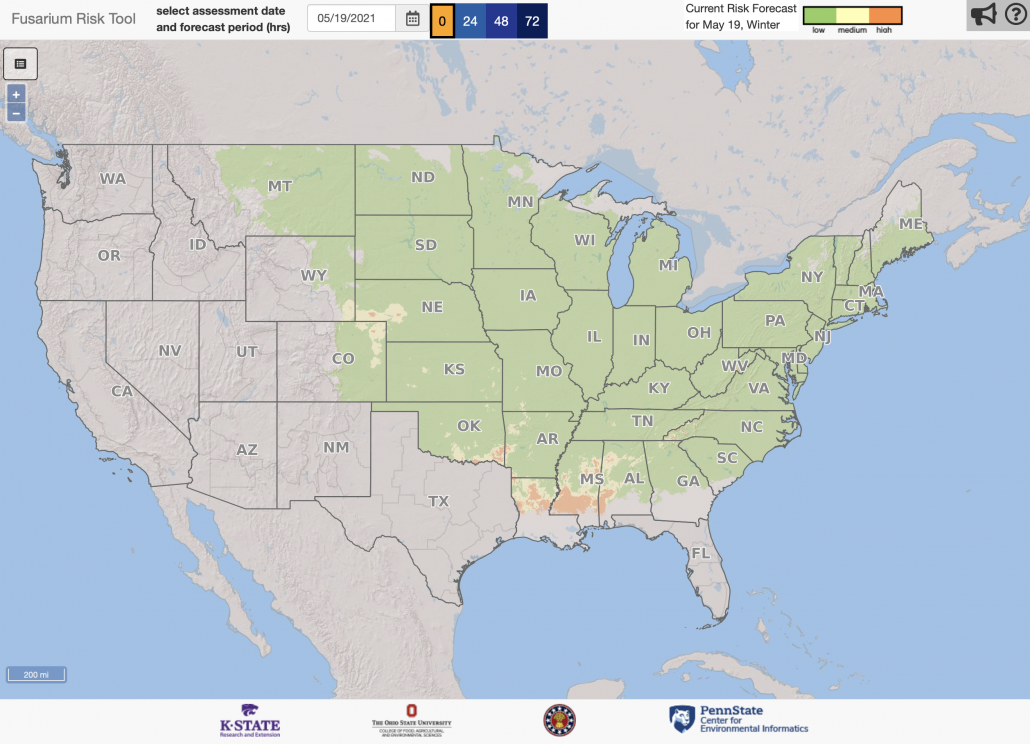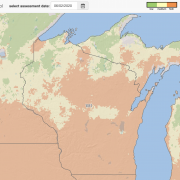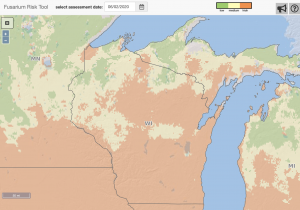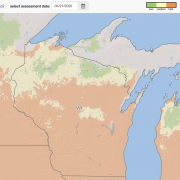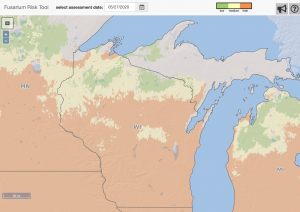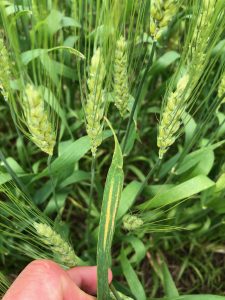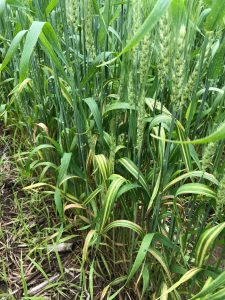Fusarium Head Blight in Wisconsin Winter Wheat: A Guide for Harvest Preparation
Damon Smith, Extension Field Crops Pathologist, Department of Plant Pathology, University of Wisconsin-Madison
Shawn Conley, Extension Soybean and Small Grains Agronomist, Department of Plant and Agroecosystem Sciences, University of Wisconsin-Madison
This season, we’ve observed moderate to high levels of Fusarium head blight (FHB), also known as scab, in some Wisconsin winter wheat fields. The incidence and severity have varied based on location, the susceptibility of the wheat variety, and whether a fungicide was applied at or shortly after anthesis.
FHB has been more prevalent in the southern and south-central wheat-growing areas of the state. However, it can also be found in other areas, depending on the susceptibility of the wheat varieties grown. As you prepare for harvest, it’s crucial to scout your maturing wheat crop and estimate the potential damage from FHB.
FHB can cause direct yield loss, and the fungus that causes this disease can also produce deoxynivalenol (DON), also known as vomitoxin.
Identifying FHB
In non-mature winter wheat or spring wheat fields, diseased spikelets on an infected grain head die and bleach prematurely, while healthy spikelets on the same head retain their normal green color (Fig. 1). Over time, premature bleaching of spikelets may progress throughout the entire grain head. If infections occur on the stem immediately below the head, the entire head may die. As symptoms progress, developing grains are colonized, causing them to shrink and wrinkle. Infected kernels often have a rough, sunken appearance and range in color from pink or soft gray to light brown. As wheat dries down, visual inspection of heads for scab will become more difficult.
Why FHB Identification is Important
FHB identification is important because it not only reduces yield but also decreases the quality and feeding value of grain. The FHB fungus may produce mycotoxins, including DON or vomitoxin, which can adversely affect livestock and human health when ingested.
The U.S. Food and Drug Administration has set maximum allowable levels of DON in feed for various animal systems. For beef and feedlot cattle and poultry, the limit is less than 10 ppm; for swine and all other animals, it’s less than 5 ppm. However, many professional animal nutritionists agree that in ruminating cattle, the level of DON in the total ration should be below 1 ppm.
Local grain elevators test for DON and discount loads of grain for unacceptable levels of the mycotoxin. Be sure to check with your local elevator about their thresholds for docking grain and discount schedule based on the level of DON detected BEFORE you bring a load for delivery.
Lodged Wheat and DON
We’ve noted many fields with high levels of lodging in Wisconsin this season. Research has shown that DON levels are significantly higher in lodged wheat compared to standing wheat. The longer wheat is lodged, the more DON accumulates. If you suspect that DON is a concern in your field and there is significant lodging, care should be taken during harvest to test grain for DON.
Preparing for Wheat Harvest
- Adjust combine settings to blow out lighter seeds and chaff. Research has shown that adjusting a combine’s fan speed from 1,375 to 1,475 rpms (100 rpms above standard configuration) and shutter opening to 90 mm (3.5 inches; 20 mm wider than the standard configuration) resulted in the lowest discounts at the elevator due to low test weight, percentage of damaged kernels, and level of the mycotoxin deoxynivalenol (DON; vomitoxin) present in the harvested grain. This strategy should be used only for fields expected to have high levels of scab, as harvested yield can also be reduced in field with normal kernels due to the higher air flow.
- Take special care when harvesting fields that are lodged. Remember that higher levels of DON are likely in fields with lodged wheat. Be sure to test grain so you know what the DON concentration is before taking the crop to the elevator.
- Know your elevator’s inspection and dockage procedure and discount schedule (each elevator can have a different procedure and discount rate).
- Scabby kernels do not necessarily mean high DON levels and vice versa. For example, in a 2014 fungicide evaluation, very low visible levels of FHB were observed for all treatments. However, when the finished grain was tested for DON, significant levels were identified for all treatments. Be sure to test and know what levels of DON are in your grain even if you didn’t see a high level of visible disease. Also, don’t assume that because a fungicide was used, there will be no DON.
- DON can be present in the straw, so there is concern regarding feeding or using scab-infected wheat straw. DO NOT use straw for bedding or feed from fields with high levels of scab. If in doubt, have the straw tested for DON levels.
- Do not save seed from a scab-infected field. Fusarium graminearum can be transmitted via seed. Infected seeds will have decreased growth and tillering capacity as well as increased risk for winterkill.
- Do not store grain from fields with high levels of scab. DON and other mycotoxins can continue to increase in stored grain.
- Harvest in a timely fashion to minimize elevator discounts and balance dockage due to FHB. Click here to read about some recent research on optimizing harvest timing in winter wheat.
For more information on Fusarium head blight research, click here.
References
- Bissonnette, K.M., Kolb, F.L., Ames, K.A., and Bradley, C.A. Effect of Fusarium head blight management practices on mycotoxin accumulation of wheat straw. Plant Dis. 102:1141-1147.
- Cowger, C., and Arellano, C. 2013. Fusarium graminearum infection and deoxynivalenol concentrations during development of wheat spikes. Phytopathology 103:460-471.
- Nakajima, T., Yoshida, M, and Tomimura, K. 2008. Effect of lodging on the level of mycotoxins in wheat, barley, and rice infected with Fusarium graminiearum species complex. J. Gen. Plant Pathol. 74:289-295.
- Salgado, J. D., Wallhead, M., Madden, L. V., and Paul, P. A. 2011. Grain harvesting strategies to minimize grain quality losses due to Fusarium head blight in wheat. Plant Dis. 95:1448-1457.

